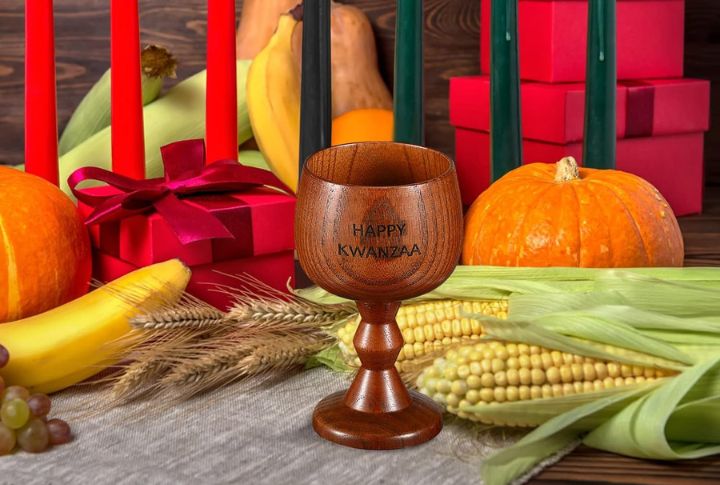
Every December, Kwanzaa returns like a story retold, never quite the same but always familiar. Its symbols speak before words do, carrying lessons that refuse to fade. Some call them traditions; others see reflections of something larger. Explore how ten pieces of tradition reveal the deeper truths behind one of the season’s most soulful celebrations.
Mkeka (The Mat)
Before anything else is arranged, the mkeka takes its place as the base of the Kwanzaa display. Woven from straw, fabric, or paper, it represents the history that people build upon. Every other symbol sits on it, grounding the celebration in shared tradition.
Kinara (Candle Holder)
At the center of the Kwanzaa setup stands the kinara, holding seven candles that represent ancestry and origin. Resting on the mkeka, it symbolizes the stalk linking generations. Each kinara differs in style, yet every design displays seven candles in one steady line.
Mishumaa Saba (Seven Candles)
The Mishumaa Saba, or seven candles, stand for the seven guiding principles of Kwanzaa. Three are red, three are green, and one is black. The black candle sits in the middle, lit first to begin the sequence that honors each day’s principle.
Vibunzi (Ear Of Corn)
Families use the vibunzi, meaning ear of corn, to represent fertility and the hope carried by children. One ear sits on the mkeka for each child. Even without children, households include one to honor the young who represent tomorrow’s promise.
Kikombe Cha Umoja (Unity Cup)

During Kwanzaa’s libation ritual, the Unity Cup reminds participants of unity and ancestral connection. Families pass it on the sixth day, drinking together as a symbol of togetherness. The liquid—often water or wine—varies according to family or cultural preference.
Mazao (Crops)
Mazao celebrates the results of collective effort and shared purpose. It recalls African harvest traditions and honors those who worked the land. Families display fruits, vegetables, and nuts on the mkeka to show gratitude for cooperation and the rewards of unity.
Zawadi (Gifts)
On Kwanzaa’s seventh day, families exchange zawadi, or gifts, to inspire learning and success. Items often include books or cultural objects that carry meaning. Handmade creations are most valued, showing creativity and respect for African heritage and shared values.
Bendera (Kwanzaa Flag)
The bendera, known as the Kwanzaa flag, displays red, black, and green to represent heritage, unity, and struggle. It mirrors the candle colors and honors the shared strength of African people. Families display it proudly, though it’s rarely made by hand.
Nguzo Saba Poster
A Nguzo Saba poster reminds families of Kwanzaa’s seven principles, written in both Swahili and English. It encourages reflection on values like unity and purpose throughout the celebration. Many households display it proudly, using it as daily motivation to strengthen shared ideals.
Kwanzaa Table Setting
Every Kwanzaa celebration centers around a carefully arranged table. The mkeka forms the base, holding all core symbols that define the holiday. Families add colorful fabrics, patterns, and personal touches to turn the display into a reflection of tradition and identity.

